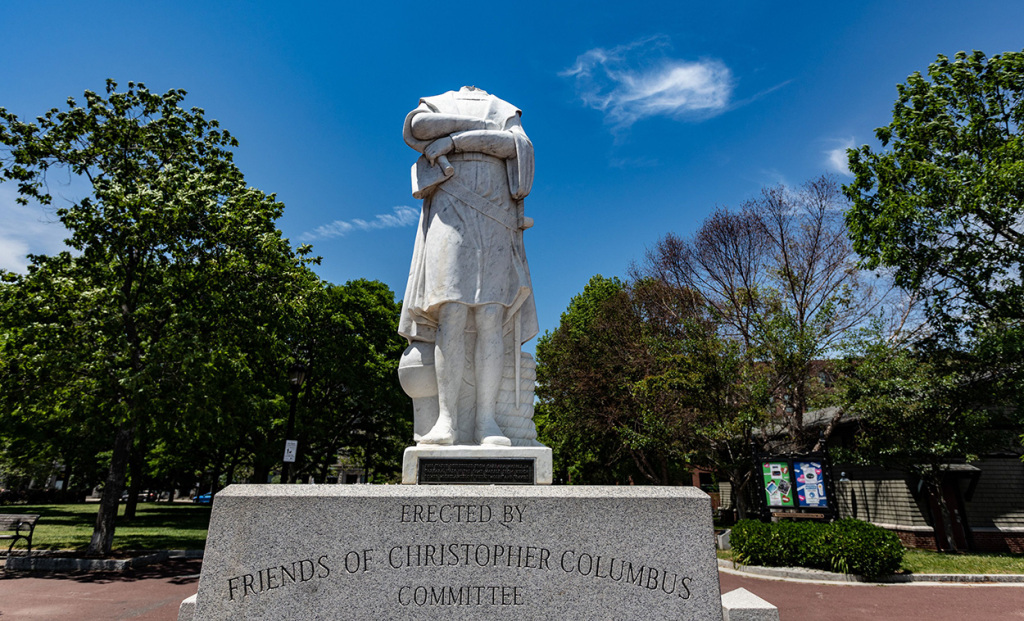[ad_1]
In 24 BCE, an army led by Queen Amanirenas of Kush invaded Roman territory in Egypt and hacked off the head of a monumental statue of the emperor Augustus. The soldiers brought the head back home, to what is now Sudan, and buried it beneath the staircase leading to a temple of victory. For the next two millennia, everyone entering the temple symbolically humiliated Augustus by treading on his face.
The fate of Augustus’s head is one of countless examples of the deliberate destruction of art in human history. Those who come into power erase the art of those who have fallen from power. Hence the iconoclastic destruction of Catholic art by newly legitimized Protestants during the Reformation, or the smashing of aristocratic art during the French Revolution, or the toppling of Communist-era monuments after 1989.
Sometimes, people who lack the power to change a political regime instead attack its symbols. Art historian Martin Warnke called this “iconoclasm from below,” theorizing that these attacks are often disparaged as mere vandalism. The “iconoclasm from above” carried out by the politically powerful often succeeds in disguising its destructive nature through the creation of an aesthetically valuable new work. Victors rewrite history, replacing destroyed monuments with new symbols of power.
In recent weeks, as protests about police brutality grew in magnitude, controversial monuments have been defaced and toppled. In a way, these attacks are as symbolic as the burial of Augustus’s head. Pulling a statue of Columbus off its pedestal will not bring back the Native American lives lost during the colonization, nor will throwing paint on a monument to a slaveholder reverse structural racism.
But there’s practicality alongside the symbolism. Monuments are expensive. A 2018 investigation found that taxpayers spent at least $40 million dollars in the preceding decade to maintain Confederate statues, homes, parks, museums, libraries, cemeteries, and heritage organizations. Meanwhile, significant sites associated with African American and Native American history are crumbling from lack of funding.
© The Trustees of the British Museum.
While removing controversial monuments might take only a few minutes during a protest, it can be impossible to achieve using peaceful means. The Southern Poverty Law Center reported that seven Southern states have laws protecting their many Confederate monuments. Alabama prohibits not just removal but even altering or renaming public monuments; in 2017, the majority-Black city of Birmingham was sued for covering its Confederate monument with plywood.
To tear down a monument is to fight for the future by attacking the past. Sometimes, the goals of this destruction are abhorrent, as when ISIS exploded ancient temples, churches, and Sufi shrines. ISIS destroyed this evidence of religious diversity in Syria and Iraq as part of their quest to impose their grim vision of orthodoxy. The destruction also funded their violence against people, by attracting donations and allowing the jihadists to sell looted art.
In 1911, Augustus’s head made another long journey—to the British Museum in London. The National Museum of Sudan holds only a replica. The British Museum, along with many other institutions, has been criticized for holding artworks taken from colonized countries, sometimes as loot during conflict. Protesters have demanded repatriation of these works for decades, often without museums even acknowledging the demands. It’s another reminder that art and violence are intimately intertwined. We should not be surprised by toppling statues; we should be surprised by their preservation, and look long and hard at who has the power to keep them erect.
[ad_2]
Source link


